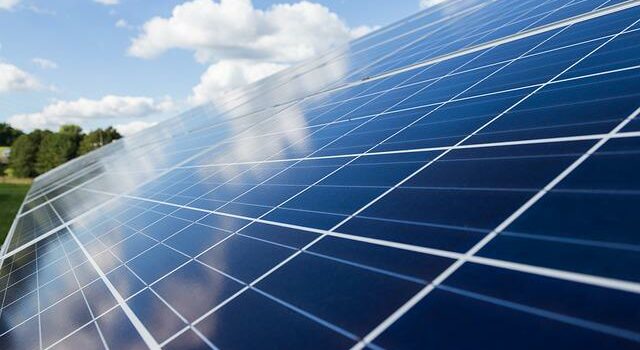
A solar fence on the house and garden that makes it easy for everyone to use solar energy. In the future, it will be possible to generate energy from the sun not only above the house, but also in front of it. It also serves as protection not only from nosy neighbours.
Fences with solar have many advantages, they can save a lot of energy costs or, at best, act as a free filling station for your own electric car or as a power supplier for your heating system. However, such systems can only be installed on the roof.
For example, if you are thinking about building a new fence with solar or are looking for the right solution, consider fences with solar. A fence made of electricity with solar is nothing different than a photovoltaic system with conventional solar panels. The only difference is that the solar panels are not mounted on the roof, but on the fence. It has one advantage. Depending on the fence module, both sides of a fence can generate electricity.
This allows you to create fences up to 2 metres high. With such a fence with electricity from solar, it can not only generate energy, but also act as a privacy screen. Due to its construction, the fences with solar are almost opaque and thus protect against prying eyes. Green, local electricity, optimal use of space and fences pay for themselves because electricity is generated, so to speak. Basically, a photovoltaic fence is a clever thing. The principle is the same as with a solar roof. The individual solar modules are connected to each other with cables and connected to an inverter. The inverter converts the direct current generated into pluggable alternating current.
Six advantages of a solar fence:
- Emission-free energy generation
- free electricity generation
- permanent reduction of the electricity bill
- rising electricity prices are a thing of the past
- for 25 years or more supply of electricity
- Refuelling your own e-car free of charge
How fencing with solar? works
Solar panels can convert sunlight into electricity of their own. This is made possible by a semiconductor (silicon) that conducts electricity. As soon as the sunlight hits the solar panel, electrons are excited there. These electrons then travel through the layers of the solar module to the inverter.
Permits and costs for solar fences
The module may be able to be attached to existing fences. A 1-metre wide module can generate up to 300 kWh. This means that a 5-metre fence can generate up to 1,500 kWh per year, depending on the location and the amount of sunlight.
The cost per running metre is about 100. 600 euros + VAT. However, such fences are not very light, but they are stable. The module weighs about 21 kg and thanks to the specially hardened glass, the module can withstand up to 23 mm of hail and 550 kg/m2 of snow at operating temperatures of -40 to +85 degrees Celsius. Cleaning is also made much easier, as if the modules were on the roof. Otherwise, the reduction of the sun’s incidence time as well as the construction-related reduction of the incidence angle compared to roof mounting is likely to have a negative effect on energy generation.
If you are handy, you can mount or build your own solar fence as long as the voltage does not exceed 120 volts. The self-assembled fence is provided as a solar f ence and includes instructions. However, the connection to an inverter may only be carried out by professionals.
You must also find out for yourself which permits you need in your municipality. The contact person is the building authority in your district or town. Finally, the PV system must be registered with the local energy supplier.
Are there subsidies for fences with solar on the house?
Local authorities, the federal government and the federal states subsidise PV projects. The aim is to further promote the expansion of solar energy in Germany. As a rule, subsidy programmes support not only PV systems, but often also the purchase of wallboxes and energy storage systems. Submitting solar funding applications in good time can save money when implementing a solar project.
Is a solar fence on the house worth it at all?
It is clearly worth it. A study by an international team of researchers shows that the consistent installation of photovoltaic panels on all sunlit roofs is enough to supply the world with electricity from solar. This global approach also applies to small things. A typical single-family home typically has enough roof space to meet your year-round electricity needs. Specifically, a typical family of four uses about 3,500 kilowatt hours of electricity per year. In southern Germany, a 17.5 square metre south-facing solar system is sufficient to generate this amount of electricity. Single-family homes, but also detached houses and many terraced houses have enough space to install a lot of electricity. Solar power can also be used to harvest additional demand for electric vehicles in the area of regular prefabricated garages.
With today’s photovoltaic modules and components (inverters, energy management, etc.) it is possible to generate electricity for 25 years at a price of 8-9 cents per kilowatt hour, even if the inverters have to be replaced during that time. Become. The state also guarantees feed-in tariffs and promotes the installation of private solar power systems, but. This means that the electricity not consumed by the owner is fed into the public grid and receives a guaranteed price of 7 cents for 20 years. Sounds like a bad deal if you only use 10% of the electricity generated from solar, but it turns out to be a very positive outcome. After all, you save around 30 cents per kilowatt hour.



